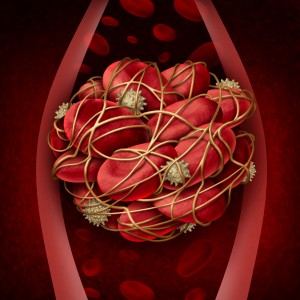 Recently the celebrity dancer, Tamar Braxton, resigned volutarily from her competition in the popular television show, “Dancing With The Stars.” At first it seemed she had been side-lined with pneumonia.
Recently the celebrity dancer, Tamar Braxton, resigned volutarily from her competition in the popular television show, “Dancing With The Stars.” At first it seemed she had been side-lined with pneumonia.
Doctors determined that it was not pneumonia, but a far more dangerous condition: blood clots in both her lungs.
Any time a famous personality contracts a career and life-threatening condition, the public becomes curious about it, which is why you have been seeing news concerning blood clots in the lungs or pulmonary embolisms.
Tamar Braxton is far from alone in her diagnosis.
Blood clots in the lungs, a condition that can masquerade as pneumonia with cough, shortness of breath and chest pain, are far from rare.
Estimates suggest pulmonary embolism and the conditions that provoke it, “affect 300,000 to 600,000 people in the United States each year. If left untreated, about 30 percent of patients who have PE will die.”
On the one hand, death from blood clots in the lungs can happen fast, within a few hours of the blood clot blocking an artery in the lung.
On the other hand, a prompt diagnosis and a good treatment plan can save lives.
FLASS Comments on Blood Clots in the Lungs
Since FLASS specializes in diseases of the lungs, it seems appropriate for us to discuss the condition of blood clots in the lungs, the condition Tamar has shone a spotlight on. 
Usually blood clots in the lungs travel there through the blood stream from the legs. By definition, “A clot that forms in one part of the body and travels in the bloodstream to another part of the body is called an embolus (EM-bo-lus).”
PE is a serious condition that can cause a number of health difficulties which go beyond shortness of breath and chest pain::
1. Pulmonary Embolism can damage part of a delicate lung because of a serious lack of blood flow to the lung tissue.
2. If the above happens, the damage can progress to “pulmonary hypertension.” Put simply, pulmonary hypertension is increased pressure in the pulmonary arteries.
3. Likewise. a pulmonary embolism can reduce levels of oxygen in your blood.
4. Needless to say, low levels of blood oxygen can damage other vital organs of your body.
5. When a blood clot is large or if there are many little clots, pulmonary embolism can cause death.
About Deep Vein Thrombosis
Pulmonary embolism is a condition that is sometimes generated by a strongly related condition called deep vein thrombosis in the legs. Pulmonary Embolism is often a complication of Deep Vein Thrombosis.
Symptoms of Deep Vein Thrombosis include:
1. An area radiating heat,
2. A tenderness, redness or pain in your leg or legs when you walk.
Causes of Deep Vein Thrombosis often Include:
1. Inactivity from being bedridden or taking long car or plane trips,
2. Recent Changes in veins due to surgery.
3. Familial tendency
Other causes for Blood Clots on the Lungs can include:
1. Smoking/Tobacco: It is no secret that tobacco use increases the risk of blood clots.
2. Pregnancy or Recent Pregnancy
3. Obesity. In contrast to being overweight, the condition of blood clots in the lungs or the legs can often strike people who are very physically fit. Athletes have been mysteriously afflicted. There is some discussion that this is due to their low blood pressure, but no one really knows exactly why.
4. Homone therapy: This includes hormone replacement therapy after menopause.
5. Birth Control Pills: Blood clots are a known risk of all birth control pills.
The bottom line is that we suggest you talk to your doctor about deep vein thrombosis and lung embolisms if you have any of the above mentioned high risks, signs or symptoms.
Tamar Braxton is fortunate that she has been quickly diagnosed. Several treatments are available to her doctors. Doctors will undoubtedly aim at keeping the blood clots from enlarging. Her medications might include oxygen, blood thinners, anticoagulants, as well as clot dissolvers.
Moreover, sometimes surgical procedures can be utilized, involving the use of catheters inserted into the blood vessels.
Florida Lung, Asthma and Sleep Specialists wish the best for Tamar Braxton and we are grateful to her and her medical team for helping to educate the public about this often-misdiagnosed disease.





